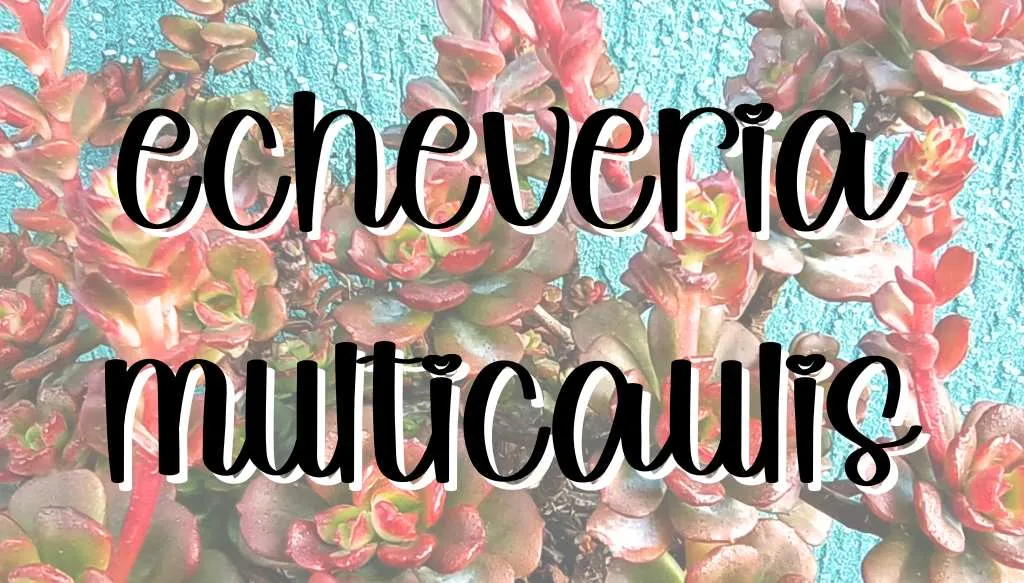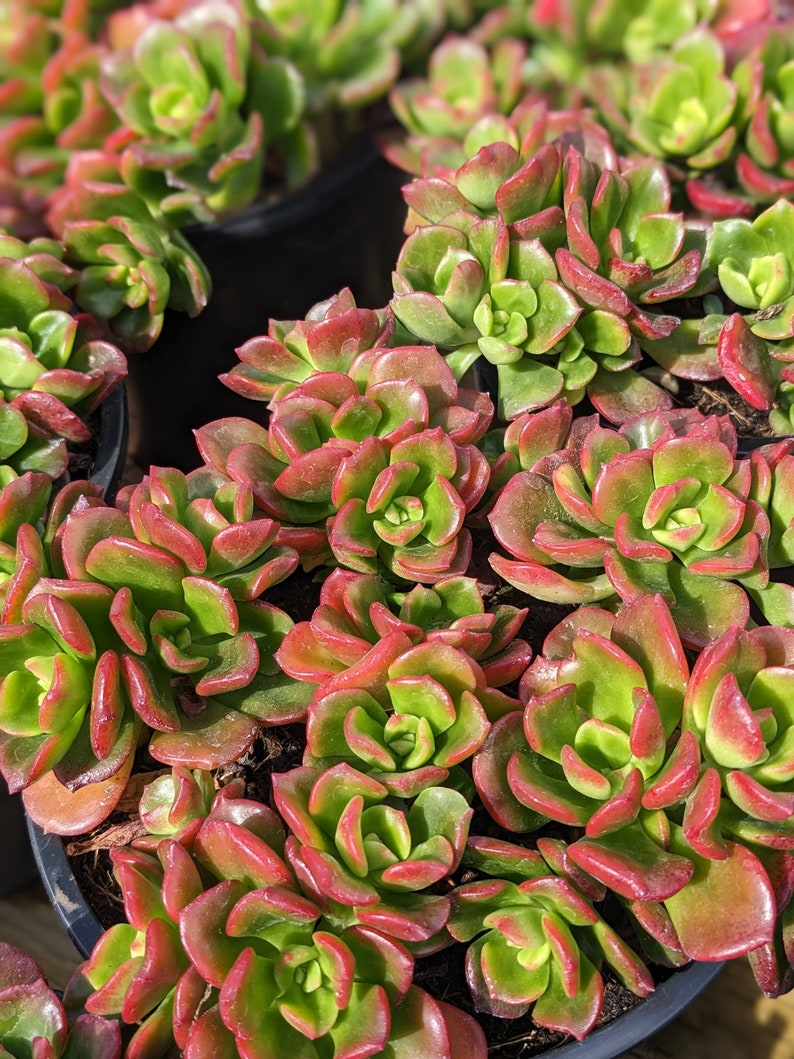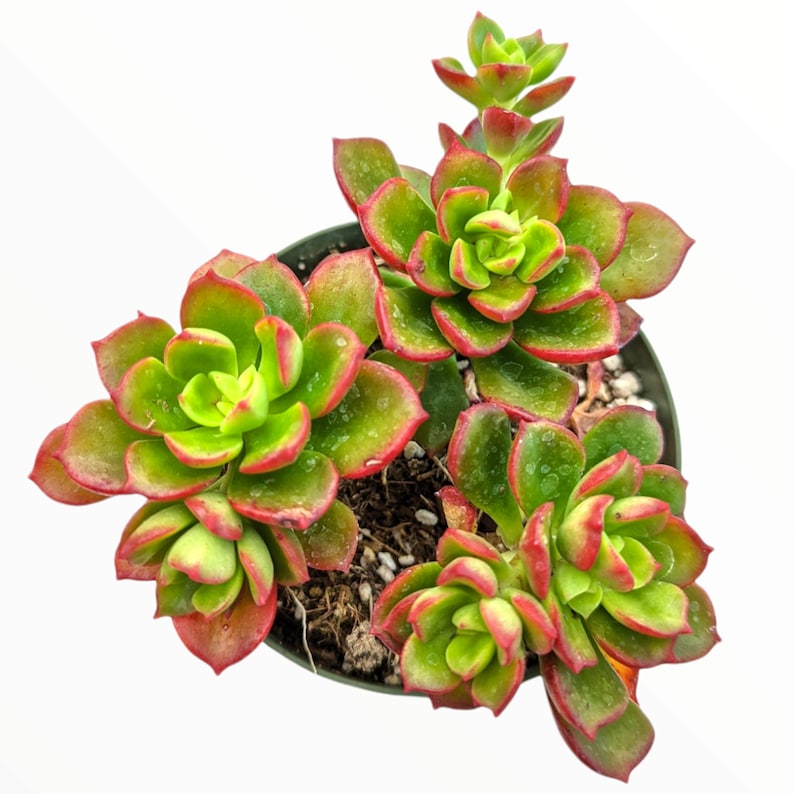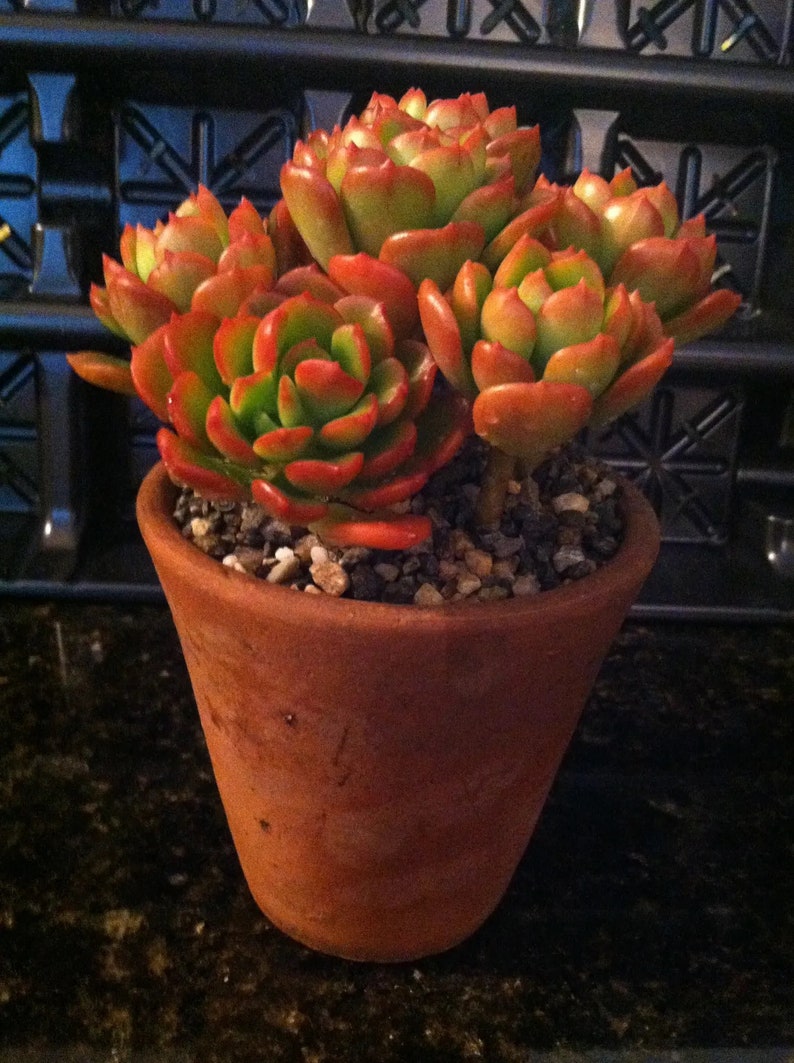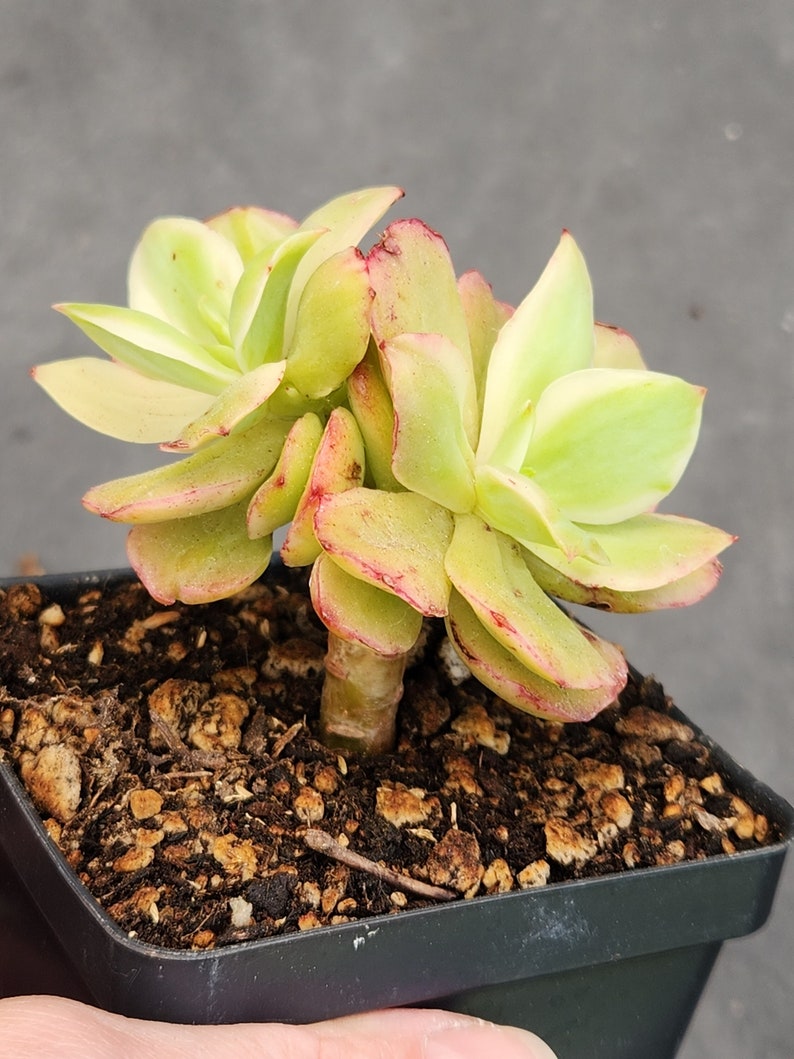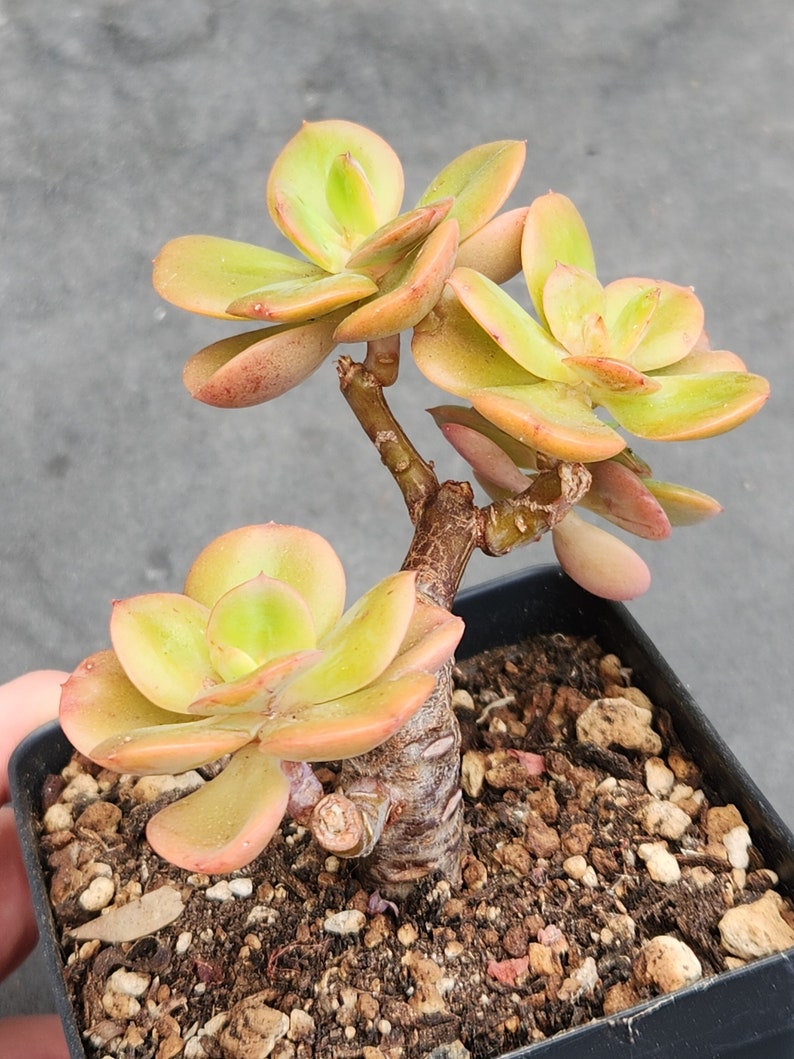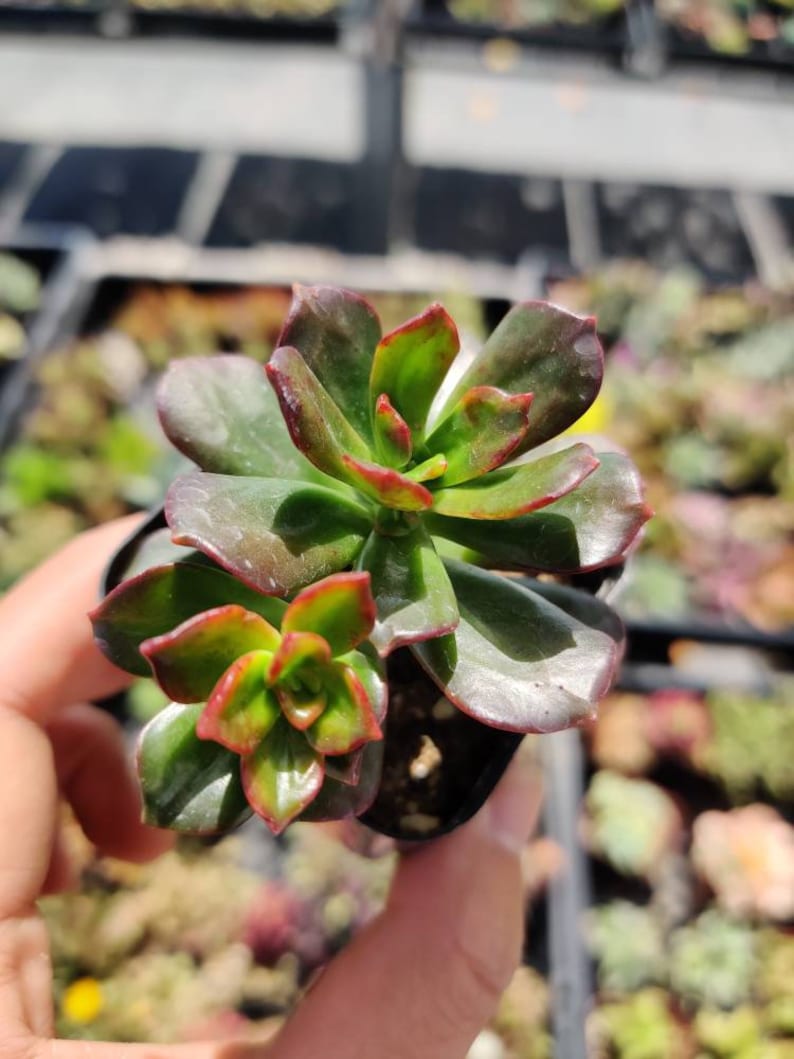Echeveria multicaulis ‘Copper Rose’ is a stunning succulent known for its captivating copper-colored rosettes and ease of care. In this comprehensive guide, we will explore everything you need to know about Echeveria multicaulis ‘Copper Rose,’ including its alternate names, appearance, care requirements, propagation methods, common problems, and more. If you’re already a succulent enthusiast, get ready to delve into the world of this beautiful succulent variety!
Dig in!
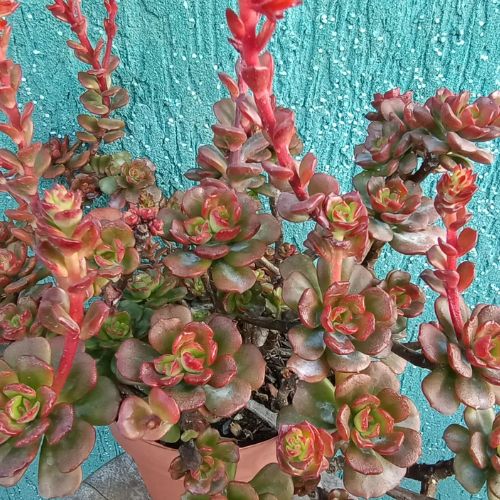
Common Names
Echeveria multicaulis ‘Copper Rose’ may also be referred to as Copper Rose Echeveria or simply Copper Rose. These names are often used interchangeably to describe this particular cultivar.
Plant Appearance and Growth
Echeveria multicaulis ‘Copper Rose’ showcases striking rosettes composed of fleshy, triangular leaves that are predominantly copper-colored. The leaves can exhibit variations in color, ranging from deep copper to reddish-brown, and they often have a slight powdery coating. This succulent typically grows to a compact size, with rosettes reaching a diameter of about 4 to 6 inches (10 to 15 cm).
Flower Color and Blooming Period
The flowers of Echeveria multicaulis ‘Copper Rose’ are bell-shaped and appear on long, slender stalks that emerge from the center of the rosettes. The color of the flowers can vary, but they are generally orange or coral in hue. Echeveria ‘Copper Rose’ typically blooms during the spring and summer, treating you to a delightful display of vibrant blossoms.
Echeveria multicaulis ‘Copper Rose’ Care Requirements
Light Requirements
Echeveria multicaulis ‘Copper Rose’ thrives in bright, indirect light. Place your succulent in a location where it receives at least six hours of sunlight per day. While it can tolerate some direct sunlight, be cautious of intense, prolonged exposure as it may cause sunburn or leaf damage. A well-lit windowsill or a spot near a south-facing window is often ideal.
Watering
Like most succulents, Echeveria multicaulis ‘Copper Rose’ has low water requirements. Allow the soil to dry out completely between waterings to prevent the risk of root rot. As a general guideline, water your plant when the top inch (2.5 cm) of soil feels dry to the touch. During the winter months, reduce watering frequency to mimic the plant’s natural dormancy period.
Soil Requirements
To ensure proper growth and water drainage, Echeveria multicaulis ‘Copper Rose’ requires well-draining soil. A mixture of regular potting soil and perlite or pumice works well to promote adequate drainage. Avoid heavy or moisture-retaining soils, as they can lead to waterlogged conditions that may harm the plant’s roots.

Consider amending your soil with Bonsai Jack’s gritty mix to ensure your succulent soil drains quickly to prevent it from staying moist for too long. Source: Etsy
Temperature Tolerance and Hardiness Zone
Echeveria multicaulis ‘Copper Rose’ is a warm-weather succulent and thrives in temperatures between 65°F and 85°F (18°C to 29°C). It is not frost-tolerant and should be protected from freezing temperatures. The ideal USDA hardiness zone for growing Echeveria ‘Copper Rose’ outdoors is 9 to 11.
Fertilizer
Echeveria multicaulis ‘Copper Rose’ benefits from occasional fertilization to support its growth and color intensity. Use a balanced, water-soluble succulent fertilizer and apply it at half the recommended strength. During the active growing season, fertilize the plant once every two to four weeks. Be cautious not to over-fertilize, as it can cause nutrient burn and damage the succulent.

Succulent fertilizer available to purchase on Etsy.
Propagation Methods
Echeveria multicaulis ‘Copper Rose’ can be propagated through various methods, including leaf cuttings and offsets. Leaf cuttings involve carefully removing a healthy leaf from the mother plant and allowing it to callus for a few days. Once calloused, place the leaf on well-draining soil and lightly mist it with water. Keep the soil lightly moist until new roots and rosettes form. Offsets, or pups, can be gently separated from the parent plant and planted in their own containers using well-draining soil.
Common Pests and Solutions
While Echeveria multicaulis ‘Copper Rose’ is generally resistant to pests, it may occasionally attract mealybugs, aphids, or spider mites. If you notice signs of infestation, such as white cottony clusters or webbing, promptly isolate the affected plant to prevent the pests from spreading. Treat the infestation by using a gentle insecticidal soap or neem oil spray, following the instructions on the product label. Regularly inspecting your succulent for pests will help you catch and address any issues early on.
As an Amazon Associate I earn from qualifying purchases at no additional cost to you.
Fix the pest problem on your succulents and cacti with these popular insecticides.
Common Problems and Solutions
Overwatering
Overwatering is a common issue that succulent owners may encounter, and Echeveria multicaulis ‘Copper Rose’ is no exception. If you notice the leaves becoming mushy, translucent, or discolored, it may be a sign of overwatering. To fix this problem, adjust your watering schedule and allow the soil to dry out thoroughly between waterings. Ensure that the pot has drainage holes to prevent water from accumulating at the roots.
Leggy Growth
Insufficient light can cause Echeveria multicaulis ‘Copper Rose’ to grow leggy, with elongated stems and widely spaced leaves. To address this problem, provide your succulent with more direct sunlight or supplement its light requirements with a grow light. Additionally, consider rotating the plant periodically to encourage even growth and prevent it from leaning towards the light source.
Leaf Loss
Occasionally, Echeveria multicaulis ‘Copper Rose’ may shed its lower leaves. This natural process is a response to stress, such as changes in lighting conditions or improper watering. To minimize leaf loss, ensure that your succulent receives adequate light, water it correctly, and avoid sudden environmental changes. New growth should emerge from the center of the rosette.
Growing Echeveria multicaulis ‘Copper Rose’ Indoors
Echeveria multicaulis ‘Copper Rose’ can thrive indoors if provided with the right conditions. Place it near a south-facing window or provide supplemental grow lights to ensure it receives sufficient light. Follow the care guidelines mentioned earlier regarding watering, soil, and temperature. Indoor humidity levels are generally suitable for this succulent, making it an excellent choice for indoor cultivation.
Toxicity
Echeveria multicaulis ‘Copper Rose’ is considered non-toxic to cats, dogs, and humans. However, it is always a good practice to keep any plant out of reach of curious pets or children to avoid accidental ingestion.
Unique Adaptations
While Echeveria multicaulis ‘Copper Rose’ does not possess any unique adaptations that significantly differentiate it from other succulents, its fleshy leaves and ability to store water make it well-suited to arid environments. These adaptations allow the plant to withstand periods of drought and survive in conditions where water is scarce.
Repotting
Echeveria multicaulis ‘Copper Rose’ generally requires repotting every two to three years or when it outgrows its current container. Choose a pot slightly larger than its current one and use well-draining soil. During repotting, carefully handle the succulent and ensure that the roots are intact. Allow the plant to settle in its new pot before resuming regular care.
When you’re rooting or transplanting your succulents and cacti, use SUPERthrive to help reduce the chance of transplant shock and grow a strong root system.
Pruning
Pruning Echeveria multicaulis ‘Copper Rose’ is not necessary for its overall health but can be done for aesthetic purposes or to remove any dead or damaged leaves. To prune, simply use clean, sharp scissors or pruning shears to trim away the unwanted parts. Take care not to remove too many leaves at once, as it can stress the plant.
With this comprehensive care guide, you are well-equipped to cultivate and enjoy the beauty of Echeveria multicaulis ‘Copper Rose.’ Its stunning copper-colored rosettes, minimal care requirements, and resilience make it a fantastic addition to any succulent collection.

